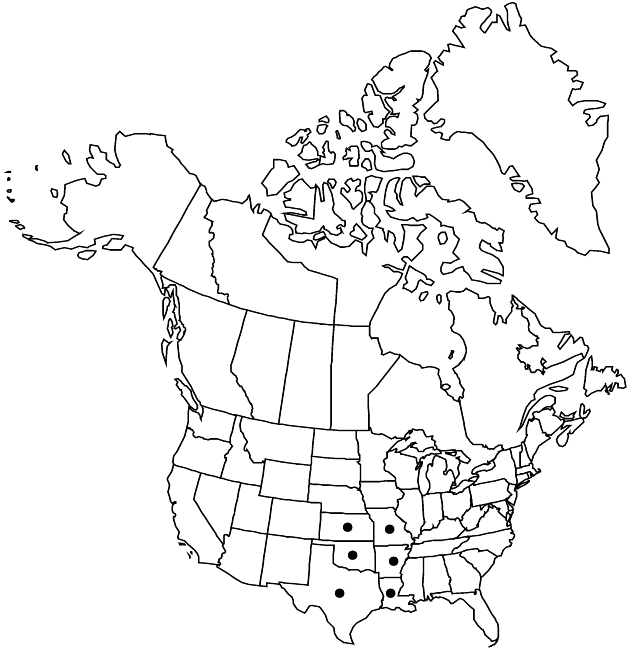Marshallia caespitosa
in A. P. de Candolle and A. L. P. P. de Candolle, Prodr. 5: 680. 1836.
Plants (10–)20–50(–80) cm (aerial stems unbranched, usually clustered). Leaves mostly basal; basal petiolate; blades 3-nerved, linear, linear-elliptic, or linear-oblanceolate, 5–15 cm × 2.5–9.5(–15) mm. Heads borne singly, 20–32 mm diam. Peduncles 10–28 cm. Phyllaries 9–12 × 1–3 mm, (margins sometimes narrowly-winged proximally) apices obtuse to acute, often mucronate. Paleae linear, apices acute or mucronate. Corollas usually white, sometimes pale lavender, lobes 4–6 × 0.5–1 mm. Pappi: scale margins irregularly fimbriate. 2n = 18, 36.
Phenology: Flowering May–Jun.
Habitat: Limestone outcrops, sandy soils
Elevation: 100–1000 m
Distribution

Ark., Kans., La., Mo., Okla., Tex.
Discussion
Scapiform to subscapiform plants of Marshallia caespitosa with relatively few cauline leaves and heads borne singly occur mostly in Oklahoma and southeast Texas and Louisiana. Plants with more or less leafy stems and one to relatively many heads are sometimes recognized as var. signata; they grow mostly in central Texas.
Selected References
None.
